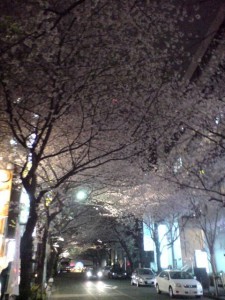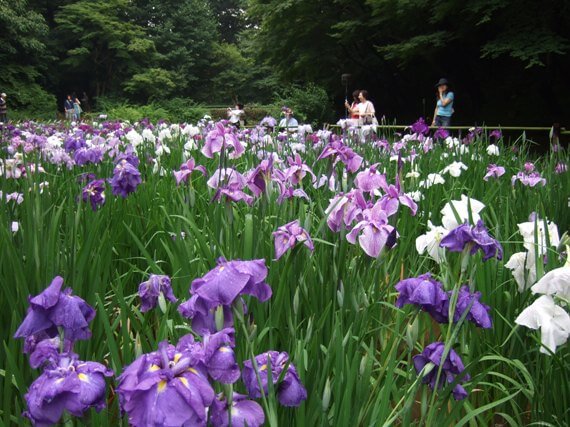Some Japan stuff
If the plane-grounding Icelandic ash cloud hasn’t been sufficient reminder of how vulnerable we are to nature’s vagaries (and how fortunate that we have such an extensive technological arsenal to protect ourselves), check out this story about Japan’s vegetable shortages:
The government is calling on farmers to speed up vegetable deliveries after cold weather and lack of sunlight led to a poor spring crop and spiking vegetable prices.
“The vegetables prices may remain high for the foreseeable future. We’d like to ask farmers to bring forward their shipments in a bid to stabilize retail prices,” Agriculture, Forestry and Fisheries Minister Hirotaka Akamatsu told a news conference following a regular Cabinet meeting Friday morning.
Also on Friday, the Agriculture, Forestry and Fisheries Ministry asked the National Federation of Agricultural Co-operative Associations to bring forward vegetable shipments. Consumer organizations as well as the ministry have also asked farmers to ship malformed vegetables that are usually discarded.
However, noting the measure will have only limited effects, government sources say they fear vegetable prices are unlikely to decline until May or later, and farmers pointed out that complying with demands for early shipment is difficult.
“We harvested lettuce and other vegetables earlier than usual in response to an increase in demand from the restaurant industry during the spring vacation period. Even if we are asked to bring forward shipments, it’s difficult to comply,” said an official of the Ibaraki Prefecture chapter of the agricultural federation.
Shredded lettuce and cabbage come with nearly everything in Japan: you walk into a little restaurant, and the waitress plunks down a small bowl of shredded cabbage and carrots with ginger dressing as your o-tooshi-mono. That there would be a shortage of them is really unsettling. Of course, Japan isn’t facing a famine—you’ll notice that one proposal for making up the difference is just not rejecting too many misshapen cabbages, which is a problem the DPRK would have loved to have around a decade ago. Still, the story is a good reminder of how intricate our supply and distribution systems are. (Of course, you could also take the opportunity to bring up Japan’s insane agricultural-subsidy system, but I’m feeling generous today.)
*******
It’s a few days old, but the Asahi English site had a good rundown of what’s led up to the current confusion—impasse doesn’t seem to be quite the best word—over the relocation of the Futenma facility in Okinawa:
U.S. officials certainly have no intention of jeopardizing the decades-long alliance with Japan, but there is growing concern and frustration at the lack of a meeting of minds on such important matters of mutual concern.
Hatoyama broached the issue of the relocation of the U.S. Marines Corps Air Station Futenma in Okinawa Prefecture during a short meeting with Obama on the sidelines of the Nuclear Security Summit in the U.S. capital on Monday. Neither Japan nor the United States explained how Obama responded.
What did come across, however, is that the meeting did not change the U.S. government’s position, which is that the best solution to the Futenma issue lies with a 2006 agreement reached by the two nations to relocate the base to the Henoko district of Nago, also in Okinawa Prefecture.
…
Behind this extremely defensive and careful approach of the U.S. government is its resolve not to make the same mistake of 2005, when Washington compromised and accepted current Henoko option.
During those negotiations, U.S. officials for a long time advocated a plan to construct a replacement facility on a landfill off the south coast of Henoko, Nago city. This plan was commonly known as “Nago Light.” However, during the final stage of the talks, U.S. officials abandoned it and accepted instead the Japanese proposal to build the new facility on the coastline of Camp Schwab at Henoko point.
Richard Lawless, who negotiated the agreement for the United States as deputy undersecretary of defense, recalled his decision to go along with his Japanese counterparts.
“They guaranteed that they can implement the proposal,” Lawless said. “I made sure about this point with several people in charge (in the Japanese government) a number of times.”
Four years after the agreement was reached, the Japanese government has done an about-turn and told Washington the Henoko option cannot be implemented. Japan’s turnaround frustrated not only Lawless, but also current U.S. administration officials. They also share a deep sense of mistrust over Hatoyama’s frequent flip-flops on this issue.
It’s very difficult to assign blame in this scenario. It’s not possible to indulge the NIMBY-ism of every municipality, but it’s understandable that many towns don’t want the side-effects of a military installation. I’m very much a supporter of the military, but it’s a plain and simple fact that putting a lot of hopped-up kids in their early twenties far from home—in an environment of literal martial discipline in which their violent impulses are deliberately brought to the surface so they can be channeled to useful purposes—nearly guarantees an increase in crime and a tense relationship with the locals, whatever job-creating benefits may come along with the installation. Washington wants the existing agreement to be implemented; Tokyo seems to see the new administrations in both countries as an opportunity to restart negotiations practically from square one. Neither seems likely to have all its expectations met.
*******
Sugarpie, I have just found the must-have camp accessory of the year:
Herman Van Rompuy, the European Union’s first permanent president, has published his first anthology of haiku poems.
Van Rompuy, a former prime minister of Belgium, said here Thursday that he hopes to compose haiku when he is in Tokyo for the annual EU-Japan Summit, which convenes April 28.
The book, titled “Haiku,” contains 45 haiku he wrote in Dutch and which have been translated into English, French, German and Latin.
Can you just…?
A new commission–
the joy of its formation
like freshest spring rains*******
Indifference from
sassy Yank colonials–
our cries sad, owl-like!*******
Dry cicada shell–
an easy relationship
would be so empty
Okay, in all seriousness, van Rompuy could be very good; but haiku is one of those genres that bring out the “I could do that!” dilettantism in people, and the results are nearly always irredeemably precious, in my experience. For some reason, the combination of shortness (not a major time investment!), nature themes (I love Nature—I’m a good person!”), and Japaneseness (aesthete capital of the world!) makes haiku hard to resist, but it also makes them difficult to execute well. Maybe Catherine Ashton will be flogging her first manga this summer?
Added later: Thanks to Instapundit for the link. I have a half-dozen regular commenters who routinely agree with me, for which I am very grateful; but if you have a dissenting comment to make, I’ll be glad to read it, since I don’t get much dissent around here. (That’s not an aspersion, regular readers.) If you’re wondering where my interest in Japan comes from, I studied Japanese literature in college and grad school, and I lived in Tokyo from the ages of 24 to 36. I am unapologetically American down to the bone, but I love Japan also, and I’m very interested in seeing our alliance not screwed up.

